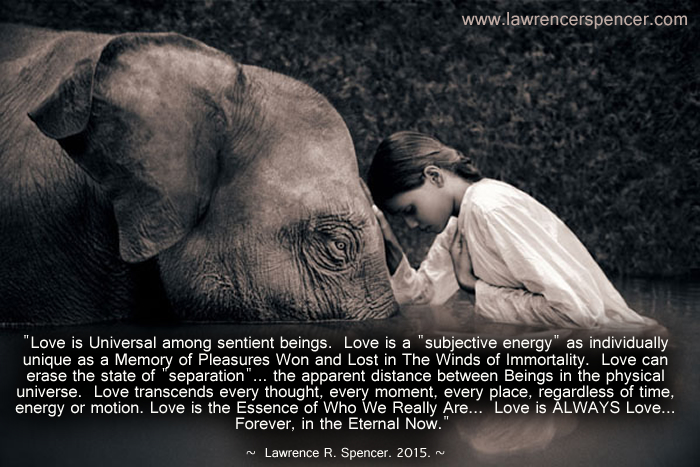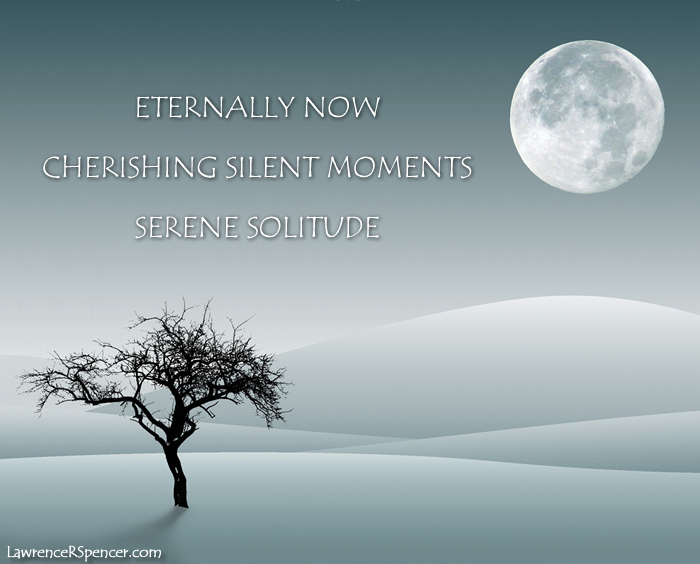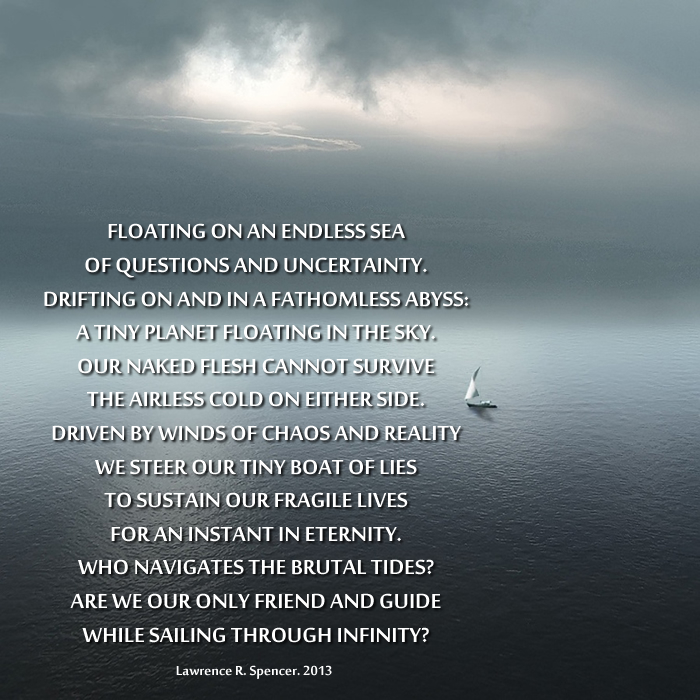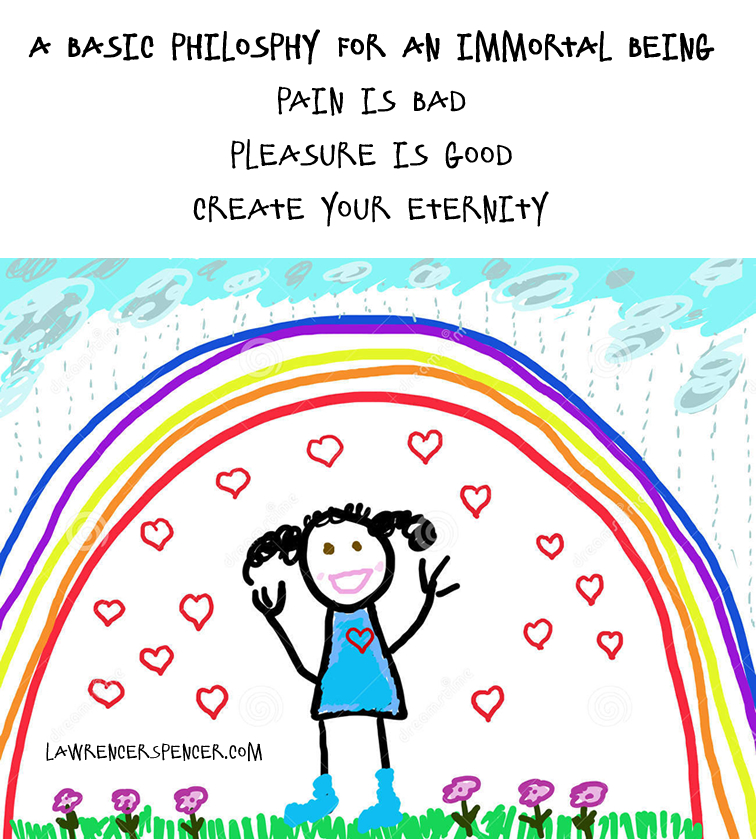Republished by Blog Post Promoter
Tag Archives: eternity
SILENT HAIKU
Republished by Blog Post Promoter
DRIFTING
Republished by Blog Post Promoter
When we are confronted by the possibility that everything we’ve learned in life could be a lie, how do we “know” what we think we know?
FLOATING ON AN ENDLESS SEA
OF QUESTIONS AND UNCERTAINTY.
DRIFTING ON AND IN A FATHOMLESS ABYSS:
A TINY PLANET FLOATING IN THE SKY.
OUR NAKED FLESH CANNOT SURVIVE
THE AIRLESS COLD ON EITHER SIDE.
DRIVEN BY WINDS OF CHAOS AND REALITY
WE STEER OUR TINY BOAT OF LIES
TO SUSTAIN OUR FRAGILE LIVES
FOR AN INSTANT IN ETERNITY.
WHO NAVIGATES THE BRUTAL TIDES?
ARE WE OUR ONLY FRIEND AND GUIDE
WHILE SAILING THROUGH INFINITY?
____________
Lawrence R. Spencer. 2013
A BASIC PHILOSOPHY FOR AN IMMORTAL BEING
Republished by Blog Post Promoter
A Basic Philosophy for an Immortal Being
Pain is bad
Pleasure is good
Create your eternity
SPINOZA: AN ETERNAL ASPECT
Republished by Blog Post Promoter
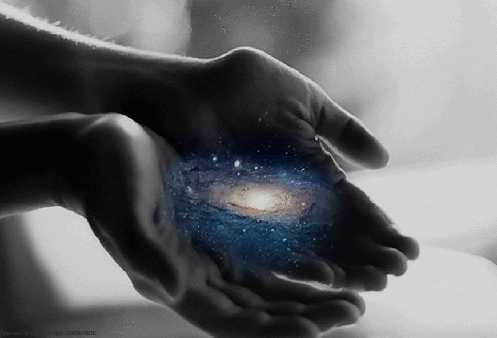 “In so far as the mind sees things in their eternal aspect, it participates in eternity.”
“In so far as the mind sees things in their eternal aspect, it participates in eternity.”
“The highest activity a human being can attain is learning for understanding, because to understand is to be free.”
“Be not astonished at new ideas; for it is well known to you that a thing does not therefore cease to be true because it is not accepted by many.”
“If you want the present to be different from the past, study the past.”
“I would warn you that I do not attribute to nature either beauty or deformity, order or confusion. Only in relation to our imagination can things be called beautiful or ugly, well-ordered or confused.”
Watch the excellent video excerpt about the life and philosophy of Spinoza from the book The Story of Philosophy, by Will Durant
Baruch Spinoza (1632 – 1677 ) has been called by some “The Prince of Philosophers”. By the Catholic Church and the Jewish priests he was banned as a “heretic”. Spinoza was raised in the Portuguese Jewish community in Amsterdam. He developed highly controversial ideas regarding the authenticity of the Hebrew Bible and the nature of the Divine. The Jewish religious authorities excommunicated him, effectively excluding him from Jewish society at age 23. His books were also later put on the Catholic Church’s Index of Forbidden Books.
If you are fundamentally heretical, like me, how can you not love this guy?

